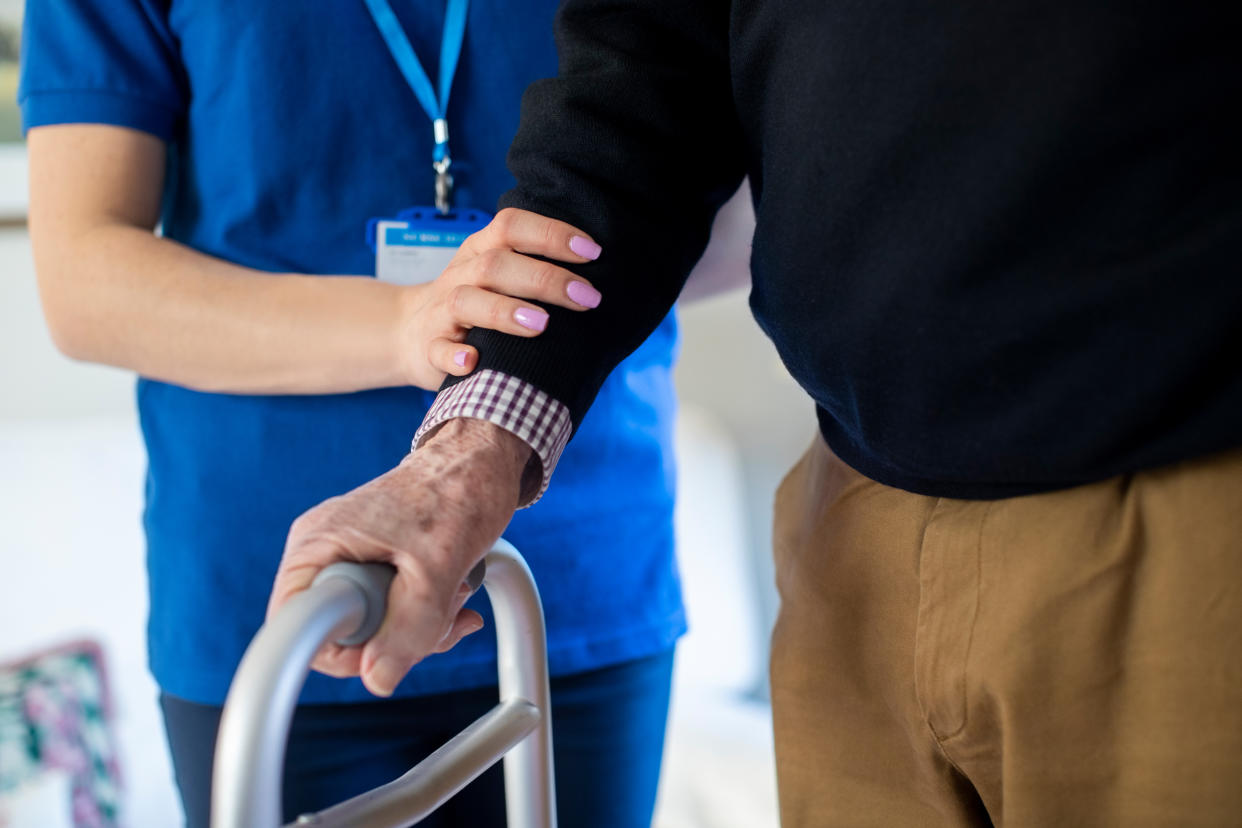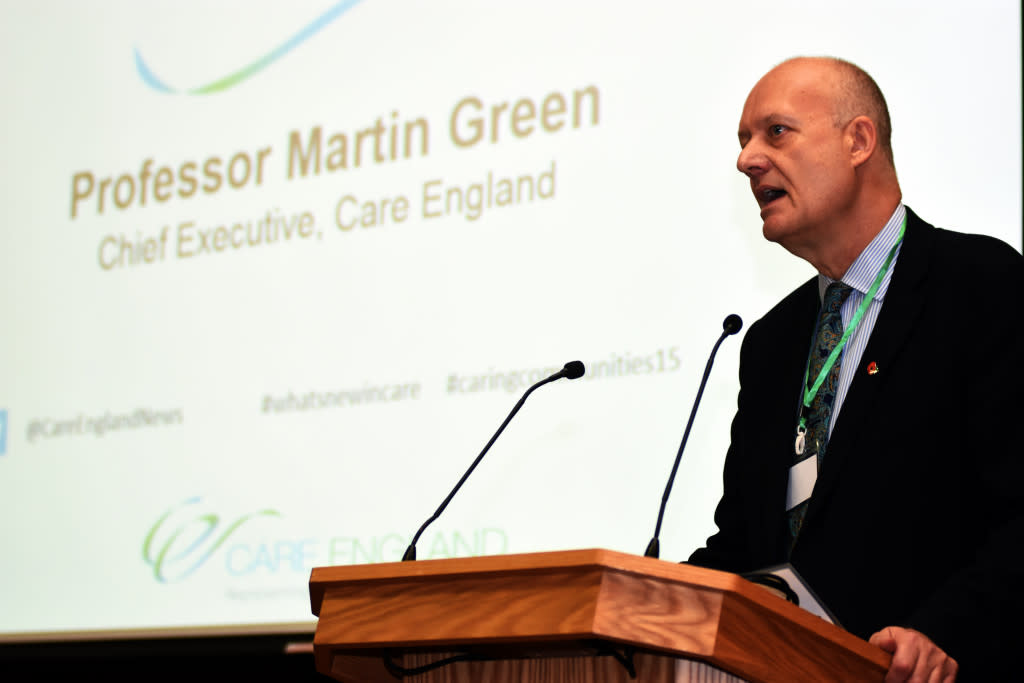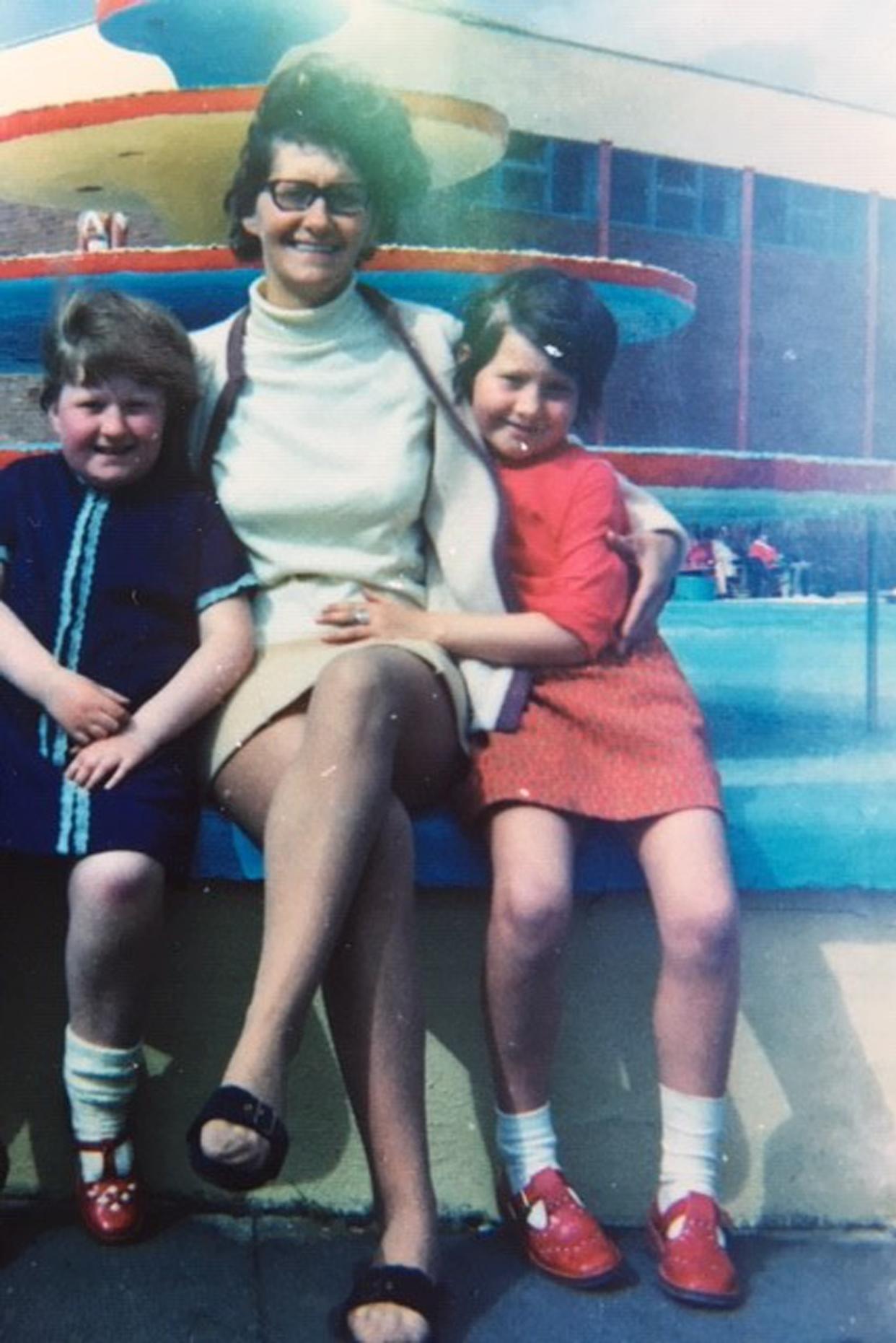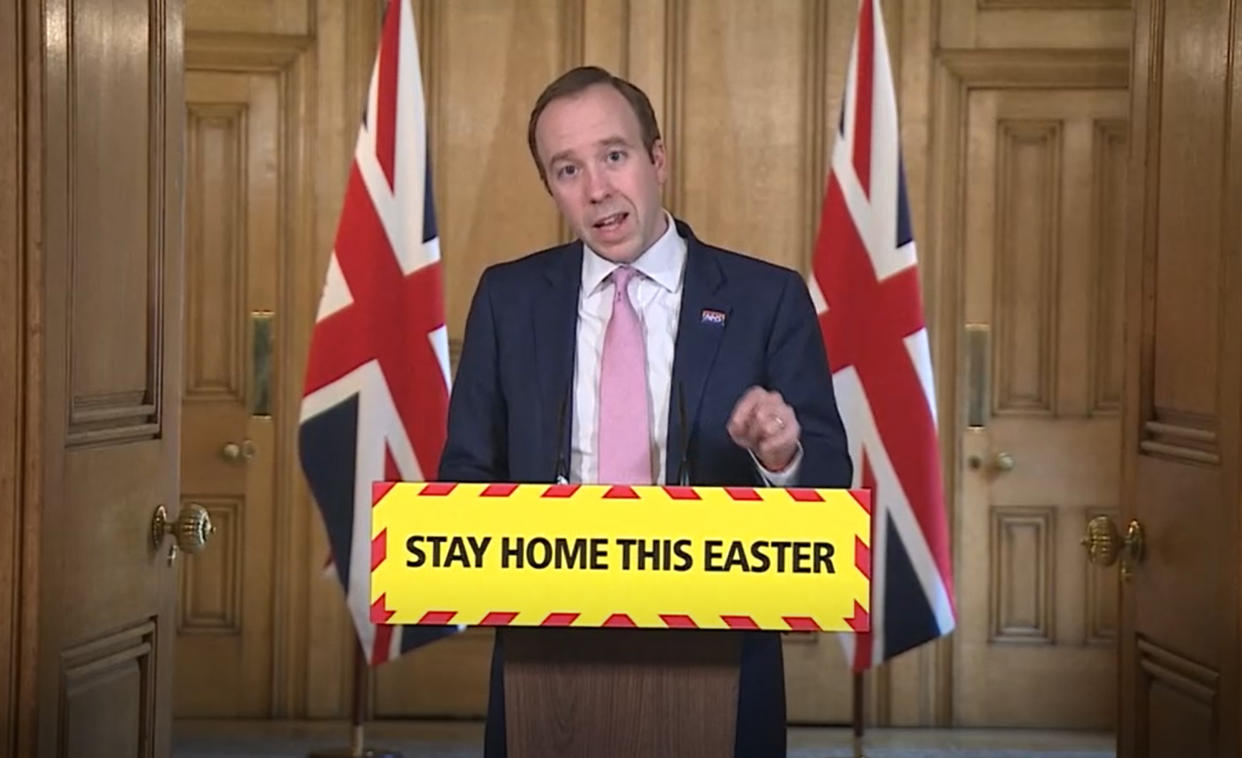Care home coronavirus deaths are being 'airbrushed out of official figures'

Hundreds of coronavirus deaths in care homes are going unreported in an attempt to “airbrush out” the true numbers of elderly people who have died, care bosses have claimed.
Care England – the leading body of care providers in England – estimates that the coronavirus death toll in care homes across the country is likely to be close to 1,000, but such deaths are not included in headline figures.
It has prompted warnings that ministers are underestimating the impact of COVID-19 on the most vulnerable sectors of society.
Professor Martin Green, chief executive at Care England, told Yahoo News UK: “Without testing we cannot know the scale of the coronavirus threat and we cannot make adequate plans to tackle it effectively.
“We are seeing underreporting of the number of deaths due to lack of testing.

“Deaths might not be in the thousands yet, but it is coming up to that level.
“We need a proper analysis of death rates occurring across care homes, and the government should be collecting this data.
“Without testing we cannot be sure how many people have died as a result of coronavirus. We need to test staff, residents and those that are dying.
“Based on what we are seeing, the figures do not reflect what is happening.”
Latest coronavirus news, updates and advice
Live: Follow all the latest updates from the UK and around the world
Fact-checker: The number of COVID-19 cases in your local area
6 charts and maps that explain how coronavirus is spreading
Many care homes have implemented a blanket ban on visitors to prevent the spread of COVID-19.
Julie Ding, 56, has not been able to see her dying mother for more than a month.
Ding, from Allerton Bywater, West Yorkshire, has been a full-time carer since her mother Roberta, 83, was diagnosed with motor neurone disease (MND) in 2018. After Ding’s only sibling Susan died aged 49 in 2010, she has no family other than her mother.
Roberta’s condition rapidly deteriorated and soon she was unable to walk or speak and could only breathe through a tracheostomy with the help of a ventilator.

She was in hospital before the coronavirus outbreak reached the UK and was subsequently taken to a nursing home on 2 March.
Ding has only been able to contact her mother via through video calls since then.
Ding is desperate for Roberta to return home as she worries her mother’s condition will worsen and that she will die at the nursing home alone.
“I made a promise to my mum that I will always be by her side,” Ding said.
Read more: What's happening in UK care homes is a scandal our grandchildren will ask about
“But I’m only going to be allowed in when she’s in the last throes of death. The manager will decide.”
Matthew Reed, chief executive of charity Marie Curie, said it should be possible for care homes to allow visitors for people who are dying.
But he added: “The lack of PPE and testing means workers at care homes are not well equipped to support a number of people dying in quick succession.
“The life of a care home worker is just as valuable as people working in intensive care.”
Reed said the hospital death numbers published by the government each day are “lagging behind the big number” because care home deaths are not included.
“We therefore risk not recognising the human cost of COVID-19,” he said.
His sentiments were shared by Caroline Abrahams, charity director of Age UK, who said the lack of PPE and testing is leading to the disease “running wild” in care homes.
Abrahams said on Monday: “The problem is there’s not enough of either, and what there is is going to the NHS, which is the right decision but it is leaving care settings in a difficult position.
“We were underprepared for this, we are playing catch-up on getting enough PPE and testing. I’m wondering if the needs of care homes were taken seriously early on.”
Abrahams, Reed, Green and executives from Independent Age and the Alzheimer’s Society have written a letter to health secretary Matt Hancock demanding a care package to support social care through the pandemic.
As well as PPE and testing, they are asking for the care package to include palliative and end-of-life care for people dying in the care system, as well as a daily update on the number of deaths.
Nearly 1,000 deaths leaves social care as “the neglected front-line”, the letter reads.
Abrahams said: “The current figures are airbrushing older people out like they don’t matter.”
It comes after Hancock said he can guarantee regular coronavirus testing for the care sector.
Speaking at the daily Downing Street press conference on Sunday, Hancock said measures are being taken but that the process is “nuanced and complicated”.
Across the country, care homes are reporting increases in deaths. More than 120 residents of MHA, the UK’s largest charitable provider of care homes, are thought to have died from the virus.
An Essex care home has lost 13 residents during the pandemic, with the disease so contagious that relatives have been banned from retrieving jewellery from their dead loved ones, and 15 residents at the Castletroy Residential Home in Luton have also died, with at least five testing positive for COVID-19.
More may have carried the virus, but blanket testing is not conducted as standard procedure in postmortems of people dying in care homes or in the community.

Last week The Guardian reported that around 70% of residents in one Yorkshire care home for people with dementia, operated by MHA, were suspected of being infected. Thirteen people have died in another of MHA’s Yorkshire homes and 11 have died in a home in Northamptonshire.
MHA believes at least half of its care homes have cases of infection.
Three care homes in Scotland announced 30 deaths between them earlier this week and press reports in the last week have catalogued at least 36 other care home deaths.
Scottish Care, the largest group of social care providers in Scotland, told Yahoo News UK: “From our ongoing engagement with our care home members, it is our estimation that around half of our members are dealing with COVID-19 cases.
“Either residents with confirmed COVID-19 case, residents with suspected COVID-19, or staff members unable to work due to confirmed or suspected COVID-19.
“We welcome moves to more comprehensively report on COVID-19 related deaths as we need this information in order to effectively plan Scotland’s health and care services.
The spokeswoman told Yahoo News UK that Scottish Care is also exploring options to allow relatives to safely be with loved ones during end-of-life care.
She said: “We must never forget that each death is not a statistic but a person, for whom families, friends and care home staff will be grieving.
“We must therefore also use data to develop compassionate solutions and are working to explore how loved ones can safely be with care home residents at end of life.”
A spokesman for the Department of Health and Social Care told Yahoo News UK: “We are completely transparent about how we are collating data.
“DHSC publishes daily figures to show the number of deaths of patients who have tested positive for COVID-19 in hospital.
“This is the best way to get consistent, up-to-date and reliable daily figures so that people can track the development of the coronavirus outbreak in the UK.
“Our figures are now complemented by the ONS who are able to draw in data on deaths outside of hospital from death certificates, which takes longer to compile."



